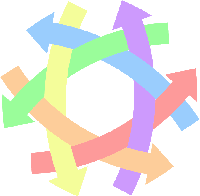
Relations - Tools for Web/Database/Reporting
Relations |
Relations-Abstract |
Relations-Query |
Relations-Admin |
Relations-Family |
Relations-Display |
Relations-Report |
Relations-Structure |
Project Summary
|
Relations (Perl,PHP)Contains functions for dealing with databases. It's mainly used as the foundation for the other Relations modules. It may be useful for people that deal with databases as well. FilesRelations-Query (Perl)An object oriented form of a SQL select query. Takes hashes. arrays, or strings for different clauses (select,where,limit) and creates a string for each clause. Also allows users to add to existing clauses. Returns a string which can then be sent to a database. FilesRelations-Abstract (Perl)Meant to save development time and code space. It takes the most common (in my experience) collection of calls to a MySQL database, and changes them to one liner calls to an object. FilesRelations-Admin (PHP)Some generalized PHP classes for creating Web interfaces to relational databases. Allows users to add, view, update, and delete records from different tables. It has functionality to use tables as lookup values for records in other tables. FilesRelations-Family (Perl)A Perl query engine for relational databases. It queries members from any table in a relational database using members selected from any other tables in the relational database. This is especially useful with complex databases; databases with many tables and many connections between tables. FilesRelations-Display (Perl)An Perl module creating GD::Graph objects from database queries. It takes in a query through a Relations::Query object, along with information pertaining to which field values from the query results are to be used in creating the graph title, x axis label and titles, legend label (not used on the graph) and titles, and y axis data. Returns a GD::Graph object built from from the query. FilesRelations-Report (Perl)A Web interface for Relations-Family, Reations-Query, and Relations-Display. It creates complex (too complex?) web pages for selecting from the different tables in a Relations-Family object. It also has controls for specifying the grouping and ordering of data with a Relations-Query object, which is also based on selections in the Relations-Family object. That Relations-Query can then be passed to a Relations-Display object, and a graph and/or table will be displayed.Relations-Structure (XML)An XML standard for Relations configuration data. With future goals being implmentations of Relations in different languages (current targets are Perl, PHP and Java), there should be some way of sharing configuration data so that one can switch application languages seamlessly. That's the goal of Relations-Structure A standard so that Relations objects can export/import their configuration through XML. |
||